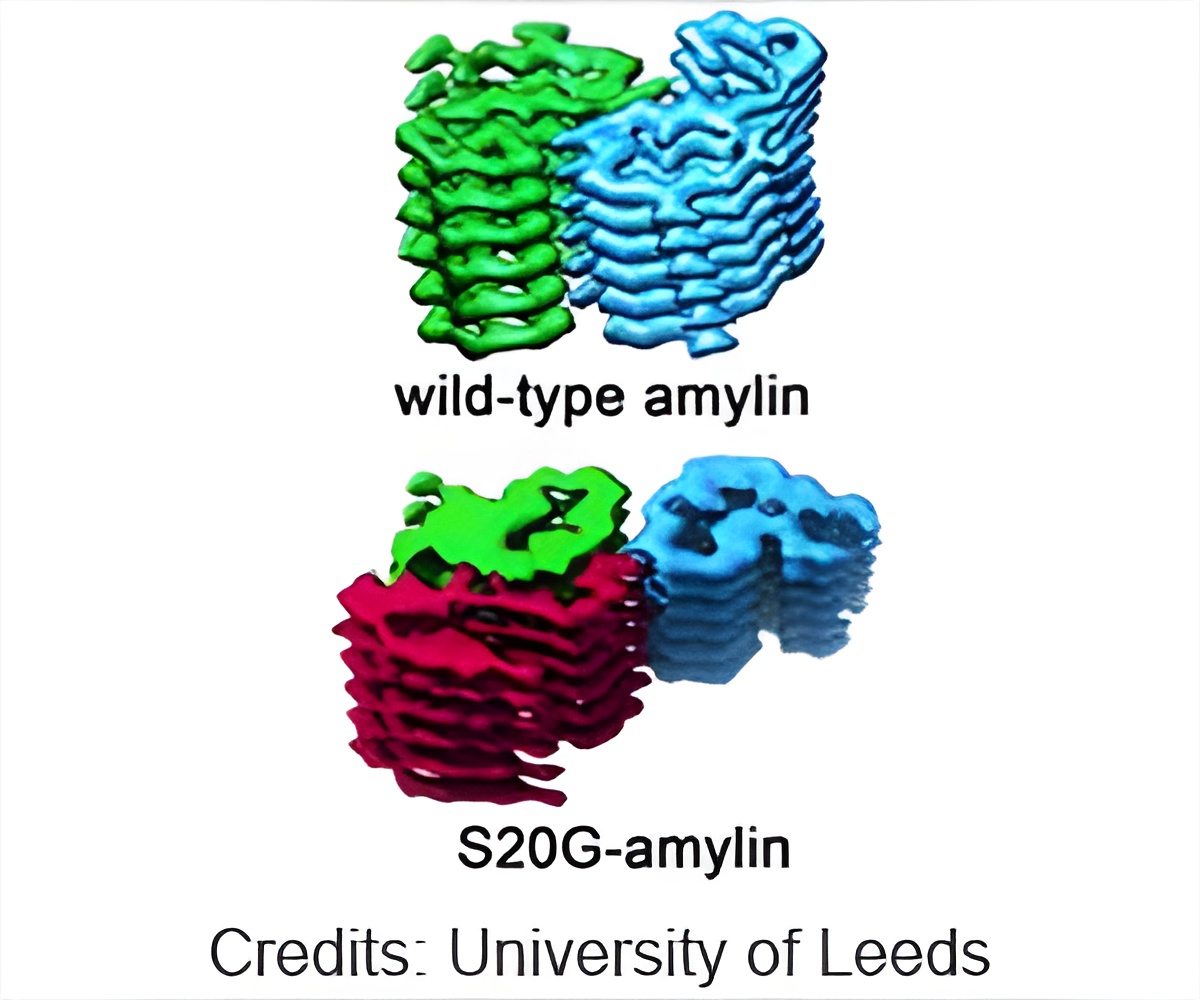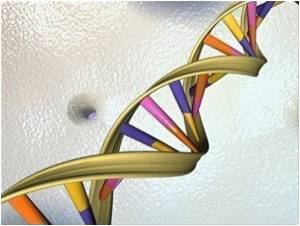For the first time, scientists have identified the structure of a protein fibre linked to early-onset type 2 diabetes.

‘For the first time, scientists have identified the structure of a protein fibre linked to early-onset type 2 diabetes.
’





Amylin
- The protein regulates glucose levels.
- Amylin protein aggregates or clumps together and forms an amyloid fibrils (a fibre-like structure). These aggregates are a hallmark of type 2 diabetes.
- Amyloid fibrils are associated with other diseases, including Alzheimer's, Parkinson's, and Huntingdon's Disease.
Scientists compared the wild type of amylin fibrils and compared it with S20G, the genetic variants found in people with early-onset type 2 diabetes. The fibrils formed by the wild-type and S20G versions of amylin were different. Wild-type fibrils had two copies of amylin per rung, whereas a form of the S20G fibrils had three amylin fibrils per layer.
The study results suggest:
Fibrils can form templates onto which more copies of amylin can lock. S20G-variant protein aggregates more quickly and is linked to the more rapid onset of type 2 disease.
Neil Ranson, Professor of Structural Molecular Biology and Deputy Director of the Astbury Centre for Structural Molecular Biology at the University of Leeds, co-led the project. He said: "This is a really exciting result because it reveals a mechanism for how ever-larger aggregates might form and that is crucial in understanding the disease process. We know this happens in disease but we have never understood clearly how it happens. Now with these structures we're getting the first glimpse what might be going on."
Advertisement
Source-Medindia















